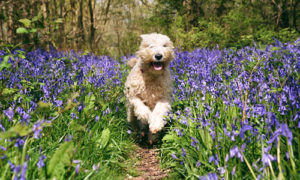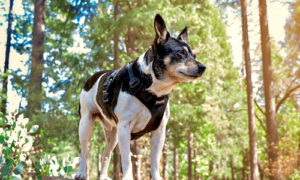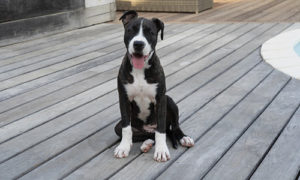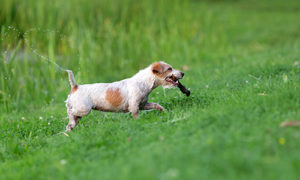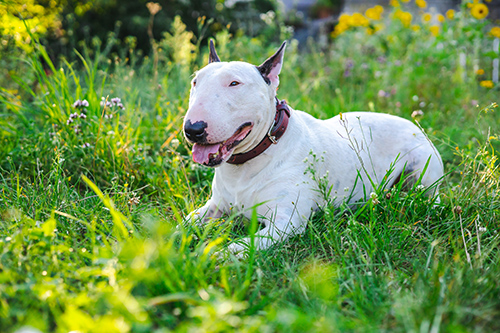
In 1835, the Bull Terrier started as a cross between the Bulldog and Old English Terrier, and that pairing produced the remarkably skilled pit dog known as the Bull and Terrier. Dogfighting and bull-baiting were long considered entertaining pastimes by many Europeans. As a result, patrons were constantly trying crosses to find the ultimate fighting dog.
Later, much-needed size was added by introducing a cross with the Spanish Pointer, resulting in an agile, robust, and tenacious dog that dominated the pits. In England, as more people became interested in the exhibition of the breed, little attention was paid to the dog so long associated with the lower echelons of society.
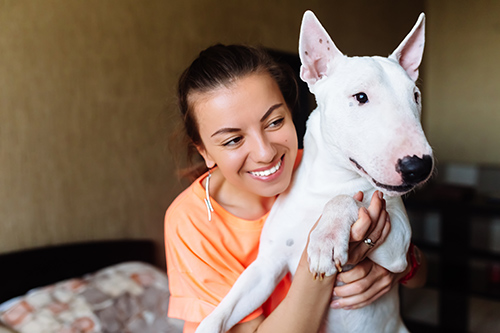
When dogfighting was abolished, some breed enthusiasts competed in exhibitions with their Bull and Terriers. As a result, they started breeding for appearance. In 1860, James Hinks crossed the Bull and Terrier with the White English Terrier and the Dalmation, which produced an all-white strain called Bull Terriers.
The new all-white strain immediately found success in the ring and became a fan favorite. The dogs also became a fashionable companion for young men that needed a good-looking masculine dog at their side. Bull Terriers earned a reputation for defending themselves while not provoking a fight and were given the nickname “the white cavalier.”
The breed eventually became more streamlined, and the dog’s unique head developed as time went on. Crosses with Staffordshire Bull Terriers reinstated color into the breed around 1900. It was not popular at first but eventually gained status as a separate AKC variety in 1936.
The variety of the breed continues as the more popular variety; however, both colors have enjoyed some fame as pets and show dogs. The breed’s comical temperament and expression garner many friends, and they have shown to be very popular in advertising and movies.
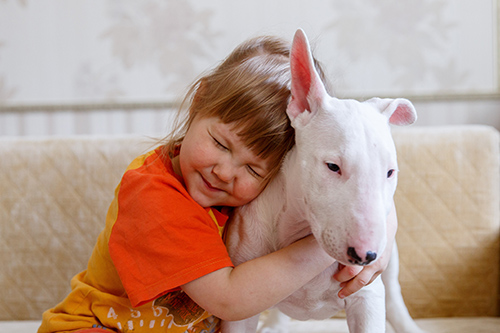
Breed Standard
The Bull Terrier is a well-balanced, sturdy, muscular dog with plenty of bone and muscle but never coarse. The dogs have a long, muscular neck and a broad chest. The feet are round and compact, and the tail is relatively short, low-set, tapered, and carried level with the back. The head is the breed’s most distinctive feature, described as “egg-shaped” in profile; there is a gentle convex curve from the top of the skull to the tip of the nose, and the jawline is strong and well defined. The dark eyes are small, obliquely set into the head, and triangular. The ears are held erect, high-set, and trim.
Breed Facts
| Energy level | Watchdog ability | ||
| Exercise requirements | Protection ability | ||
| Playfulness | Grooming requirements | ||
| Affection level | Cold tolerance | ||
| Friendliness toward dogs | Heat tolerance | ||
| Friendliness toward other pets | Friendliness toward strangers | ||
| Ease of training |
Activity Level: Moderate. This is an agile, active dog with surprising strength and endurance. It needs to be entertained, with a good exercise session or mental stimulation every day – preferably both. The dogs are an active breed that enjoys a good run. However, it is best to run it only in a safe area.
Grooming: Maintain the coat with weekly brushing.
Coat: Flat, short, harsh, and glossy.
Color: There are two varieties: White and Colored. The Brindle Bull Terrier is preferred in the Colored array, but any color other than white or any color with white markings is permitted in competition.
Group: Terrier
AKC Recognition: 1885
- Popularity: Somewhat popular
- Family Group: Terrier, Mastiff, Bull
- Country of Origin: England
- Date Developed: 1800s
- Original Purpose: Companion
- Today’s Function: Companion
- Other Name: English Bull Terrier
Bull Terrier Temperament
According to the breed standard, the Bull Terrier has a “sweet disposition” but is also “full of life.” Affectionate, willing to please, and friendly. The breed is also known for its sense of humor. They are strong-willed and can be possessive with toys and food. Guarding behavior should be discouraged in puppies.
The Bull Terrier is comical, playful, assertive, exuberant, and mischievous. The breed is a highly imaginative dog that often views things its way and is stubborn to the end. However, they are highly sweet-natured, devoted, and affectionate for all of their tough swagger. They can be aggressive with other animals and dogs. They are susceptible to obsessive behaviors such as dot staring and tail-chasing.
Health
- Primary Concerns: deafness (in whites), kidney problems (heredity nephritis and renal dysplasia)
- Minor Issues: heart problems (SAS, mitral stenosis), compulsive behavior, allergies
- Rarely Seen: patellar luxation
- Recommended Tests: hearing (whites), UP: UC ratio for kidney function, cardiac, knee
- Life Span: 11 to 14 years
- Weight: male – sixty to seventy pounds; female – 50 to 60 pounds
- Height: 21 to 22 inches
Breeder and Buyer’s Advice
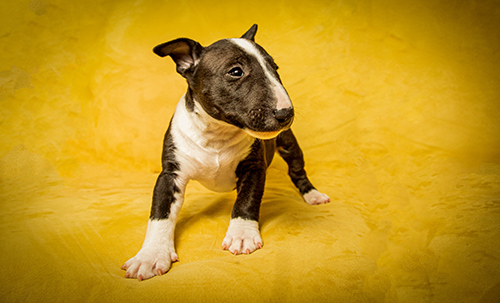
Bull Terriers are a slow-maturing breed. They often behave like puppies until around the age of three. You can visit the parent club’s website to locate reputable breeders in your area with Bull Terrier puppies for sale. The price of puppies depends on the breeder and the dog’s pedigree. Another way to get your hands on one of the these amazing dogs is to consider getting one of the many Bull Terrier rescues out there needing a loving and forever home.
Parent Club: Bull Terrier Club of America; founded in 1887
Regional Clubs: Information on approximately twenty-five clubs is listed “Regional Clubs” from the parent club’s homepage
Rescue: Bull Terrier Club of American Rescue
Frequently Asked Questions
- Are Bull Terrier good family dogs? Yes. The dogs are devoted to their families, sweet-natured, and affectionate. However, they may be aggressive towards other dogs in the home if not properly introduced.
- Are bull terriers good with kids? Yes. because of their playful and comical nature, they’re an excellent companion for children.
- Is Grooming Bull Terrier hard? No. Coat care for this breed is minimal.
- What are health and common issues? You can find a list of issues pertaining to this breed under “health.”

